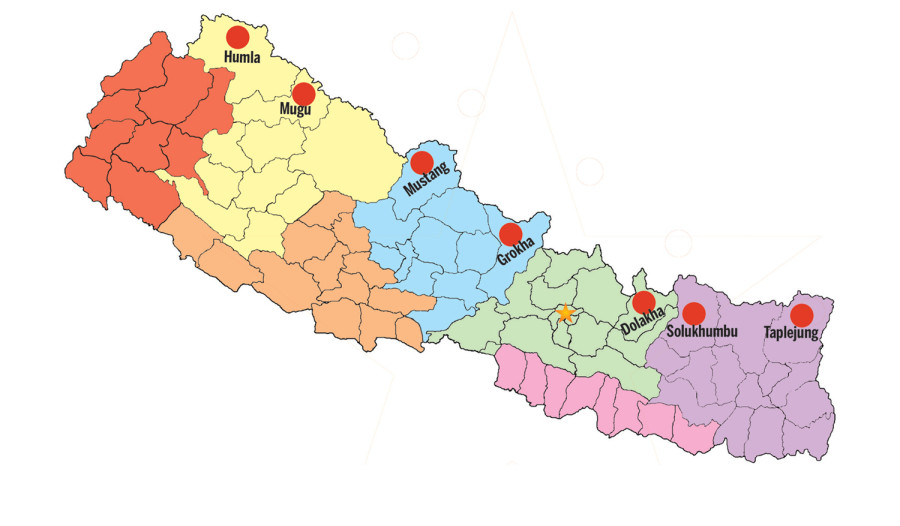Valley
Nepal, China to reopen Khasa route at earliest
Nepali and Chinese customs officials have agreed to reopen the Tatopani-Khasa route by constructing the necessary infrastructure on either side of the border at the earliest.
Prithvi Man Shrestha
Nepali and Chinese customs officials have agreed to reopen the Tatopani-Khasa route by constructing the necessary infrastructure on either side of the border at the earliest. The highway is the main conduit for commerce between the two countries.
The earthquake damaged customs and other infrastructure on both sides. China has relocated its customs and other offices from the border town of Khasa further inland to Kuti.
The less used Rasuwagadhi-Kerung route was reopened three weeks ago while the Tatopani route has remained closed for the last six months since the disastrous quake.
Damodar Regmi, deputy director general of Nepal’s Department of Customs and the head of the Nepali team, said on Tuesday that China had agreed to set up its customs office either in Khasa or another location nearby so that the route could be brought back into operations.
The largest portion of Nepal’s overland trade with China passes through the Khasa-Tatopani point, which accounts for 25 percent of Nepal’s total trade with the northern neighbour. Most of Nepal’s imports from China arrive by sea at Kolkata port from where they are transferred by rail and truck.
arrive by sea at Kolkata port from where they are transferred by rail and truck.
“As the Khasa route is the most important trade route for Nepal, we insisted on bringing it back into operation at the earliest possible date,” said Regmi. According to him, the two sides agreed to appoint focal persons to share information to reopen the road. “After each side names a focal person, they are expected to meet by December,” he said.
Deputy Director General of the Lhasa Customs Office Long Chengwei led the Chinese team. The two sides will now prepare the minutes of the meeting and sign them on Thursday, Nepali officials said. The meeting takes place annually in each country alternately.
Besides operating the road, the two sides also agreed to form joint teams to conduct a feasibility study on opening other border points between the two countries.
Nepal has established customs offices at seven other border points—Chhoser VDC in Mustang, Larke in Gorkha, Kimathanka in Sankhuwasabha, Lama-bagar in Dolakha, Yari in Humla, Mugu VDC in Mugu and Olangchungola in Taple-jung—but they are mostly used for cross-border trade by people close to the border.
As Nepal has been enduring an Indian “blockade” for the last one and a half months, it has made opening more trade routes with China a major agenda. “The Indian embargo is an eye-opener for us that we need to open more trade routes with China to ensure regular supplies of necessary goods,” said Regmi.
Nepal has asked China to help in enabling it to utilise the duty-free market access facility granted to more than 8,000 goods. “But they have asked us to first identify the major problems and inform them,” said Regmi. “The Chinese side was positive to simplifying the process to ease market access.
Nepal had a huge trade deficit of Rs98 billion in the last fiscal year, according to Nepal Rastra Bank. The two sides also agreed to promote the use of banking channels in bilateral trade, Regmi said. China also agreed to work towards easing quarantine procedures as demanded by Nepal, according to him.
They also discussed harmonising the time difference with regard to the opening hours of the customs offices of the two countries. The Chinese side agreed to give exposure to China’s best customs practices and Nepal agreed to continue providing Nepali language training to two Chinese customs officials which was discontinued after the earthquake, Nepali officials said.




 14.72°C Kathmandu
14.72°C Kathmandu











